If you are considering building a self-storage facility, it is important to understand the costs involved. The average cost to build a self-storage facility can vary depending on various factors such as location, materials, and labor. In this section, we will discuss the key insights into the cost of building a self-storage facility.
First, let’s take a look at the different expenses involved in building a self-storage facility. These can include permits, land costs, site preparation, construction materials, and labor. The cost estimation for storage facility construction can be broken down into these components, and it is essential to consider all of them when determining a budget for your project.
Second, location is a significant factor that can impact the self storage facility construction cost. Rates for land, permits, and labor can vary significantly depending on the region and city. It is essential to research and understand the local real estate and labor market before starting your project.
In the next section, we will discuss the factors that can impact the cost of building a self-storage facility in more detail.
Factors that Affect the Cost of Building a Self Storage Facility
When embarking on the construction of a self-storage facility, one of the critical aspects to consider is the cost. The price of building a self-storage facility can vary based on a range of factors that impact the overall budget. Here are some of the primary factors that can affect the cost of building a self-storage facility:
Location
The location of the storage facility is a significant factor that plays a major role in the cost of construction. Factors such as labor costs, local taxes, site access, and many others can vary based on the location of the facility. For example, building a self-storage facility in an urban area may be more expensive due to higher land prices, while building one in a rural area may be less expensive due to lower costs of land and labor.
Facility Size
The size of the self-storage facility is another crucial factor in determining the overall cost of construction. The more prominent the facility, the more it will cost to build. The size of the facility also affects the number of units that can be built, which in turn impacts the revenue potential of the facility. Therefore, it is essential to strike a balance between facility size, construction costs, and revenue potential.
Design
The design of the facility is another important factor that affects the cost of construction. The more complicated the design, the more expensive it will be to build. Designs that require more intricate architectural features, materials, or construction techniques can drive up costs significantly. Therefore, it is crucial to find a balance between the design of the facility and the overall budget.
Construction Materials
The choice of materials that are used to build the self-storage facility can also impact the overall cost of construction. For example, building a facility using premium materials will cost more than using standard materials. It is essential to find a balance between the materials used for construction and the overall budget.
Labor Costs
The cost of labor is another critical factor that affects the overall cost of building a self-storage facility. The cost of labor varies based on location, skill level, and experience. It is essential to work with a skilled and experienced team while also finding balance with the overall budget.
Site Preparation Budget for Building a Self Storage Facility
Before construction can begin on a self-storage facility, site preparation is necessary. Site preparation involves several different aspects that can impact the cost of construction. Here are some of the expenses to consider when budgeting for site preparation:
| Expense | Cost Range |
|---|---|
| Land Acquisition | $100,000 – $500,000+ |
| Surveying and Soil Testing | $5,000 – $15,000 |
| Grading and Leveling | $5,000 – $20,000 |
| Utility Connections | $10,000 – $50,000+ |
The cost of land acquisition will depend heavily on the location of the site, as well as the size of the facility being built. Surveying and soil testing are necessary steps to ensure that the land is suitable for construction.
Grading and leveling are important for creating a level surface for the facility. This may require the use of heavy equipment and can be a significant expense. Utility connections include things like electrical, water, and sewage connections that are necessary for the facility to operate.
It’s important to budget for site preparation expenses, as they can significantly impact the overall cost of building a self-storage facility. Working with experienced contractors and consultants can help ensure that site preparation work is done efficiently and effectively, minimizing costs where possible.
Construction Cost for Building a Self Storage Facility
The construction cost of a self-storage facility is dependent on a variety of factors such as location, facility size, and design. The cost also includes the expenses related to acquiring materials and hiring labor.
On average, the cost to construct a self-storage facility can range from $25 to $40 per square foot. The final cost, however, can vary considerably due to factors such as the facility’s location and size. Urban areas tend to have higher construction costs compared to rural areas due to the higher wages and material costs.
| Factor | Cost Impact |
|---|---|
| Location | High |
| Facility Size | High |
| Design | Medium |
| Construction Materials | Medium |
| Labor Costs | High |
The cost of construction materials is also an important factor. Materials such as steel and concrete can be expensive, but they are essential to building a sturdy and secure self-storage facility. The labor costs for skilled workers, such as electricians and plumbers, can also add to the overall expense.
Contracting with a professional builder with experience in self-storage facility construction can help to mitigate unexpected costs and provide more accurate estimates of the project cost. In addition, builders may be able to recommend ways to optimize the construction process and reduce overall expenses.
Optimizing Construction Costs for a Self Storage Facility
Optimizing construction costs for a self-storage facility can be achieved through careful planning and management. The following strategies can help to reduce construction expenses:
- Minimize the facility’s footprint through efficient design layouts
- Use sustainable and energy-efficient materials and design practices
- Work with a professional builder with experience in self-storage construction
- Maintain open communication with the builder and project team to avoid delays and unnecessary expenses
Considerations for the Interior Design of a Self Storage Facility
When designing the interior of a self-storage facility, there are several factors to consider that will impact the overall building costs and appeal to potential customers. Below, we discuss some of the important considerations for the interior design of a self-storage facility.
Unit Sizes
The size of each storage unit is an essential aspect to consider. The most common sizes range from 5′ x 5′ to 10′ x 30′. However, units can vary based on client needs and the available space in the facility. When deciding on the size of units, ensure that they are large enough to accommodate common items such as furniture, appliances, and boxes.
Climate Control System
Climate control is a significant concern for many customers. It is essential to ensure that the self-storage facility has the necessary climate control systems in place to protect the stored items from temperature and humidity changes. Many clients would expect a temperature-controlled facility, especially in regions with extreme temperatures.
Security Features
Security is a top priority for customers looking to store their valuable items. Ensure that the facility has security features such as surveillance cameras, alarms, and access controls. You can add extra layers of security such as perimeter fencing, motion detectors, and intercom systems to give clients peace of mind.
| Security Feature | Description |
|---|---|
| Surveillance Cameras | Install cameras to monitor the facility and curb criminal activities. |
| Access Controls | Install electronic gate access controls to limit who can access the facility. |
| Alarms | Install alarms that trigger when unauthorized access is attempted. |
| Perimeter Fencing | Fencing limits access to the facility and improves security. |
| Motion Detectors | Install motion detectors to alert security personnel of any movements on the property. |
| Intercom Systems | Install intercom systems to allow easy communication between tenants and staff. |
Financing Options for Building a Self Storage Facility
Building a self-storage facility requires a significant upfront investment, which can be a deterrent for many potential investors. Fortunately, there are several financing options available that can help cover the costs of construction. Here are some of the most common options:
Traditional Bank Loans
Traditional bank loans are a popular option for financing a self-storage facility. With a bank loan, the borrower receives a lump sum of money that must be paid back over a set period of time with interest. Bank loans typically have lower interest rates than other forms of financing, but they may require collateral and a high credit score.
Small Business Administration (SBA) Loans
The Small Business Administration (SBA) offers loans specifically designed for small businesses, including those in the self-storage industry. SBA loans are backed by the government and have lower interest rates than traditional bank loans. However, the application process can be lengthy, and the borrower may be required to provide collateral.
Commercial Real Estate Loans
Commercial real estate loans are another option for financing a self-storage facility. These loans are designed for real estate purchases and typically have longer repayment terms than other loans. Commercial real estate loans may come with higher interest rates, but they offer flexibility in terms of collateral requirements.
Crowdfunding
Crowdfunding is a newer option for financing self-storage facilities. This method involves raising funds from a large number of investors, often through online platforms. Crowdfunding can be a useful option for those who may not qualify for traditional loans or who want to spread the financial risk among a larger group of investors.
No matter which financing option you choose, it is important to carefully consider the terms and requirements before committing to a loan. It is also a good idea to consult with a financial advisor or accountant to ensure that you have a solid financial plan in place before beginning construction.
Operational Costs for Running a Self Storage Facility
When running a self-storage facility, there are various ongoing expenses to consider. Some of these expenses include:
| Expense | Description |
|---|---|
| Property Taxes | Property taxes vary depending on the location and size of the facility. Be sure to factor in these costs when creating a budget. |
| Insurance | Insurance is a necessary expense to protect your property and customers’ belongings. Premiums may vary depending on the level of coverage you select and the location of the facility. |
| Maintenance | Maintenance costs include upkeep of the property and repairs to units. It’s important to budget for regular maintenance to keep your facility in good condition. |
| Security | Security measures, such as cameras and alarms, are essential for protecting your customers’ belongings. However, these systems come with ongoing costs for maintenance and monitoring. |
| Marketing | Marketing expenses may include online advertising, print ads, signage, and promotional materials. These costs can vary depending on the size and scope of your marketing efforts. |
In addition to these ongoing expenses, it’s also important to consider fluctuating costs, such as utilities and payroll, when creating a budget for your self-storage facility. By accurately accounting for all expenses, you can ensure that your facility runs smoothly while remaining profitable.
Marketing Strategies for a Self Storage Facility
Once you have successfully built your self-storage facility, the next step is to market it to potential customers. Here are some effective marketing strategies to consider:
- Online Marketing: Create a website for your facility, and optimize it for search engines. Consider pay-per-click advertising, social media marketing, and email marketing to reach potential customers online.
- Local Advertising: Utilize local advertising channels such as radio and television ads, billboards, and flyers to target customers in your area.
- Referral Programs: Offer current customers a referral discount or incentive for referring new customers to your facility.
- Community Outreach: Participate in community events and sponsor local sports teams or charities to raise awareness of your facility.
Remember to track your marketing efforts and adjust your strategy as needed to ensure maximum effectiveness.
Hiring and Managing Employees for a Self Storage Facility
There are several considerations to keep in mind when hiring and managing employees for a self-storage facility. Here are some tips to help keep operational costs low while maintaining a productive and efficient workplace.
Determine Staffing Needs
Before hiring employees, it’s important to determine the staffing needs of your self-storage facility. The number of employees needed will depend on the size of the facility and the services offered. Generally, a small facility may only require one or two employees, while larger facilities may require several.
It’s important to consider the workload of each employee and ensure that staffing levels are sufficient to meet the demands of the facility. Overstaffing can increase operational costs, while understaffing can lead to employee burnout and decreased productivity.
Hire the Right People
When hiring employees for a self-storage facility, it’s important to find the right fit. Look for candidates with experience in customer service, sales, and operations. Additionally, candidates with experience in the storage industry may have an advantage.
Conduct thorough interviews and background checks to ensure that candidates have the necessary skills and qualifications for the job. It’s also important to provide quality training to new employees to ensure that they are prepared for their role.
Provide Competitive Wages and Benefits
Offering competitive wages and benefits can help attract and retain quality employees. Research the wages and benefits offered by other self-storage facilities in your area to ensure that you are offering competitive compensation.
Additionally, consider offering benefits such as health insurance, paid time off, and retirement plans to attract and retain employees. These benefits can help increase employee satisfaction and productivity.
Implement Productive Policies and Procedures
Developing and implementing productive policies and procedures can help improve efficiency and reduce operational costs. Clear policies and procedures can help employees understand their responsibilities and streamline workflows.
Consider implementing policies and procedures related to inventory management, customer service, and security. Provide regular training to employees to ensure that they understand and follow these policies and procedures.
Monitor Performance and Provide Feedback
Regularly monitoring employee performance and providing feedback can help improve productivity and morale in the workplace. Set clear goals and expectations for employees and provide regular feedback on their performance. Highlight areas where employees excel and provide constructive feedback on areas where improvement is needed.
Additionally, consider offering incentives such as bonuses or recognition programs to reward exceptional performance.
Frequently Asked Questions (FAQs) on Building a Self Storage Facility
Building a self-storage facility can be a complex endeavor, with many questions along the way. Here are some frequently asked questions to help you make informed decisions.
Q: What is the average price to construct storage units?
A: The average cost to build a self-storage facility can vary depending on various factors such as location, materials, and labor. On average, it can cost anywhere from $25 to $40 per square foot to build a self-storage facility.
Q: What are the typical costs associated with constructing a self-storage facility?
A: The costs associated with building a self-storage facility can vary depending on the location, facility size, and design. Typical expenses include land acquisition, site preparation, permits, construction materials, and labor costs.
Q: What is the cost breakdown for building a self-storage site?
A: The cost breakdown for building a self-storage site can vary depending on the location and size of the facility. However, typical costs include land acquisition (up to 30% of the total cost), site preparation (10-20%), building construction (50-60%), and miscellaneous expenses such as permits, marketing, and insurance.
Q: How do I estimate the cost of constructing a self-storage facility?
A: To estimate the cost of constructing a self-storage facility, you should consider various factors such as location, facility size, design, construction materials, and labor costs. You can work with a professional consultant who can help provide an accurate cost estimation based on your specific needs.
Q: What financing options are available for building a self-storage facility?
A: There are several financing options available for building a self-storage facility, including traditional bank loans, SBA loans, and crowdfunding. Each option has its advantages and disadvantages, and you should consult with a financial advisor to determine which option is best for you.
Q: How can I market my self-storage facility effectively?
A: To effectively market your self-storage facility, you can use various strategies such as online marketing, local advertising, and referral programs. You should also ensure that your facility is easily accessible and well-maintained to attract and retain customers.
Q: How do I hire and manage employees for my self-storage facility?
A: When hiring employees for your self-storage facility, you should consider factors such as experience, work ethic, and availability. You should also develop a clear system for managing employees, including training, performance evaluations, and compensation.
Q: What ongoing expenses are associated with running a self-storage facility?
A: The ongoing expenses associated with running a self-storage facility include property taxes, insurance, marketing expenses, maintenance and repairs, and employee salaries. You should factor in these expenses when creating a budget for your facility.
Q: What factors should I consider when designing the interior of my self-storage facility?
A: When designing the interior of your self-storage facility, you should consider aspects such as unit sizes, climate control systems, and security features. These factors can impact the cost of construction and the overall customer experience.










